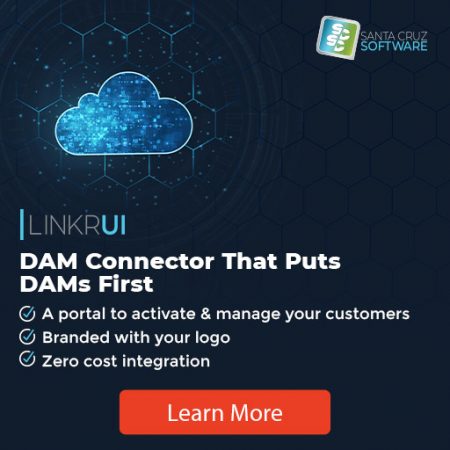
It is undoubtedly true that one of the key areas of significant innovation in Digital Asset Management over the last decade has been integrating DAMs with other upstream and downstream technologies. The understanding that the ROI from DAM solutions can be leveraged many times has been central to the widespread adoption of DAM.
Vendors have achieved these integrations using a multiplicity of techniques, ranging from hand-rolled API scripts through to developing dedicated connectors. Some integrations are more important to a larger number of end-users than others, however. One example is Creative Tools.
The original definition of this class of product would be Adobe tools like Photoshop, Illustrator and Premiere. But these days, the scope encompasses other software, such as office/productivity tools like Word, PowerPoint and the Google equivalents. These might not meet a strict definition of ‘creative’, but for many enterprise users, they are just as important.
It is practically impossible for DAM vendors in 2024 to not offer some kind of Creative Tools integration, certainly if they wish to acquire and retain enterprise clients. What used to be a ‘nice to have’ is now a ‘must have’ for an Enterprise DAM to be worthy of that description.
Build or Integrate?
The next key decision vendors face is whether to develop this in-house or use a third-party tool. While the capability to offer integration with a wide range of third-party technologies is now essential, the minute details of achieving it can act as a drag upon a vendor’s precious developer resources and limit their opportunity to innovate. DAM vendors are typically lightly staffed and leverage the relative operational stability of their platforms to enhance profits and provide working capital for whatever limited Research and Development they can afford. 
Set against this are the characteristics of the Creative Tool providers. They are not only commercial entities, but also very large tech firms with multi-billion dollar market capitalisations, which dwarf even the largest DAM vendors, let alone the average sized firm. If Creative Tool providers decide to completely change their API protocol, there is virtually nothing DAM vendors can do to stop them. The decision to make changes might not be an arbitrary one, it could also be security-related and therefore essential to roll out very quickly. There is the ever-present risk that these will occur at periods when resources are particularly scarce (e.g. just before new releases are scheduled to be launched).
Offloading the issue of support for the integration of a DAM with creative tools to a third-party specialist provider has a strong commercial logic. DAM products are highly complex and advanced pieces of software engineering – even the lower cost ‘DAM Lite’ products. To both scale up while retaining tight control over fixed costs, vendors should be highly selective about what they actually develop in-house. There is often a strong instinct among developers to build rather than buy, but this is particularly true in the case of Creative Tools integration.
This issue is not just one for DAM vendors to consider; their partners and clients are impacted also. If an excessive amount of time is spent maintaining custom code that does no more than replicate functionality that can be purchased by a third-party provider, this draws time away not just from innovation but enhancing the robustness and reliability of the core DAM API. This can result in DAM platforms both failing to keep pace with competitor products and simultaneously being more buggy and unreliable for longer.
No DAM vendor would now seriously consider developing their own database to hold asset metadata, user details etc. Yet in the 1990s and early 2000s, this was quite a normal state of affairs and vendors hand-built custom databases completely from scratch. Having coded early DAM systems, I can personally attest that developing custom DAM databases from scratch soaked up a huge percentage of development time that ideally would have been spent doing something more useful (and interesting) . At the point third-party databases became robust and cheap enough, they were adopted by DAM vendors. Those that did so before their peers were better able to meet the needs of their clients. Some who did not, and who delayed switching from proprietary to third-party databases, have spent literally decades ridding themselves of support commitments for these legacy DAMs. A direct comparison with Creative Tools integration can be made. Decent quality products are now available and it makes zero sense, whether commercially or technically, to re-invent a lower-quality version of the same wheel.
Maintaining Vendor Branding
Having decided to outsource Creative Tools integration to a third party, the questions then become to whom and why? One important consideration is the ability to brand third-party components to present a consistent experience for end-users. At a simplistic level, the logo of the DAM vendor (and only their logo) should be visible. If a multiplicity of other options are shown then this creates confusion among the users of the DAM and the impression left is that the DAM has been cobbled together from a ‘grab bag’ of different parts. These weaken end-user faith in the competence of the vendor and the robustness of the rest of their platform.
The DAM software market is diverse, highly fragmented and has in excess of 100 firms who all regard this market as core business (some estimates place the figure as high as 1,000 vendors). Having the logos of competitor platforms displayed alongside those of the vendor emphasises the lack of differentiation that end users can face – this becomes especially important when clients decide whether to renew DAM vendor service contracts. Where possible these scenarios should be avoided and integration tools chosen which allow exclusive branding.
Implementation Cost
One mitigating factor against the build vs buy argument is where the cost of a given tool competes with the expense that might be incurred by Creative Tools integration in-house. Any comparison must be made realistically based on the time required by in-house resources, rather than just the cash expenditure (which will usually be low). I would also argue that calculations about support time also need to be factored in. This functionality represents yet more code and more complexity with the potential for problems to occur, not to mention the risk of the Creative Tool vendors making arbitrary changes, as discussed previously.
Some Creative Tools integration vendors do not charge for developing a version of their component which will work with a given DAM platform. This is clearly a strong advantage over their peers and completely neutralises the build vs buy arguments. In addition, the cost-basis for utilising the tools needs to be considered, along with any contractual obligations such as requiring the vendor to effectively become a reseller for the integration provider. These factors complicate what should be quite a straightforward decision and integration component vendors who avoid these kinds of stipulations should be favoured over those who do not.
Conclusion
That Enterprise DAM platforms must closely integrate with Creative Tools in 2024 is beyond doubt. The question is how to achieve it. As discussed in this article, for DAM vendors to contemplate developing this in-house lacks any recognisable form of commercial logic. Not only should third party dedicated integration providers be used, but DAM vendors should carefully consider how their brand will be represented to their clients. Further, those Creative Tool integration components that have clear, logical and efficient pricing models will generally be more advantageous for DAM vendors.
About Ralph Windsor
Ralph Windsor, a seasoned professional in the Digital Asset Management (DAM) industry since 1995, has served as the Project Director at Daydream, and he now oversees the editorial and commercial operations of DAM News. His extensive experience encompasses all facets of DAM implementation, including metadata schema design, vendor selection and change management. Windsor has contributed to over 120 DAM projects, offering expertise in areas ranging from data migration to ongoing governance. Based in the United Kingdom, he specializes in areas such as metadata, legal rights management and technical aspects of DAM.

